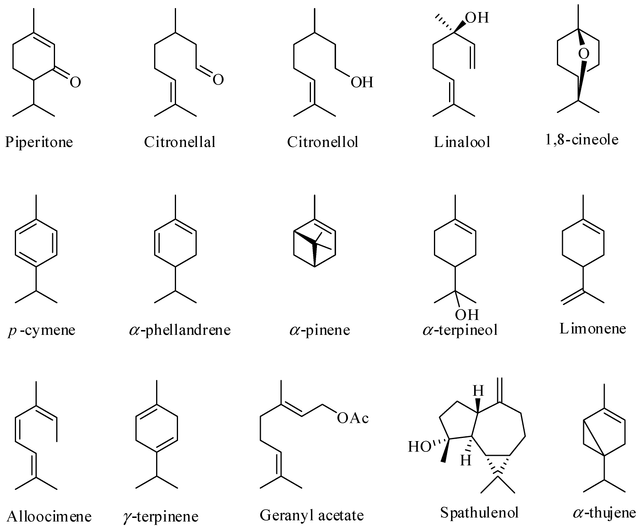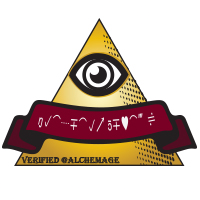The Antimicrobial Efficacy of Salvia officinalis (sage), Origanum vulgare (oregano), and Citrus limon (lemon) essential oils. [Abstract/Proposal]
The following post is both my abstract and project proposal for my chemistry class. This is a project entirely designed on my own with the only parameters being that the experiment cannot be biology, so naturally I went for biochemistry. I greatly appreciate you taking the time to read through my work. Any and all corrections and suggestions will be taken to heart as I move forward. Thank you for your support.
Toxicity and Lethal Dose
The importance of knowing the toxicity of the compounds we use regularly in our daily lives is key to maintaining our health. Synthetic household cleaners often have high toxicity levels and relatively low lethal dose medians (LD50), the value of the dose which kills 50% of the test subjects when administered in a single exposure (OSHA 2012), while many widely available naturally occurring phytocompounds have low toxicity levels and relatively high LD50. For example, the LD50 of bleach fumes in rats was measured to be 850 mg/kg (UC 2004), while the LD50 of Salvia officinalis (sage) in rats was measured to be 4,000 mg/kg (Eidi 2006). Even pure eugenol, a compound found in small parts of the essential oil of cloves which is known to be toxic, only has a LD50 of 1,980 mg/kg in rats (Sober 1950).
Environmental Impact
The chemicals that are produced, and used to produce many common household cleaners, are not only toxic to humans and animals but they easily contaminate the environment causing disruption of natural cycles. Sodium Dodecyl Sulfate (SDS) is one of the most common anionic surfactants used in households and industrially. SDS is released in large amounts into the water systems after its use (Chaturvedi 2011). According to the Centers for Disease Control and Prevention (CDC), “[SDS] is toxic to aquatic organisms. It is strongly advised that this substance does not enter the environment.” In contrast, essential oils are typically extracted with plain water through the application of steam distillation. Essential oils are volatile aromatic compounds which breakdown readily with time and/or heat, making them relatively safe for environmental use (Opender 2008).

Source
In Conclusion...
Common synthetic household cleaners are toxic to our health and to our environment. Many phytocompounds have low toxicity levels and are relatively safe for consumption. Synthetic contaminants readily toxify the environment they are released into, while phytocompounds are relatively neutral in their impact on the environment. Thus, it is important to research the antimicrobial efficacy of common essential oils in order to discover potential replacements for harmful synthetic cleaners.
Proposal
The purpose of this project is to test three different commonly available essential oils (EO) for their antimicrobial efficacy. These three variables will be Salvia officinalis (sage), Origanum vulgare (oregano), and Citrus limon (lemon) essential oils. Three sets of three different microbial samplings will be taken, three from the kitchen counter, three from the bathroom sink, and three from the bedroom door handle. Samples will be taken using sterile cotton swabs and applied to sterile malt extract agar (MEA) growing medium in petri dishes. Two of the petri dishes will be divided into three even sections visually, while the third will be used as a control. A sterile round piece of paper soaked in one of the three variable oils will be placed in the center of each of the three divided sections. The petri dishes will be left to incubate in a warm dark place for one week. Upon inspection, antimicrobial efficacy will be measured by the presence or absence of a Zone of Inhibition (ZOI). Diameter of the ZOI is arbitrary with minimal knowledge of solubility of each EO within the MEA growing medium.
Sources
CDC. SODIUM LAURYL SULFATE - International Chemical Safety Cards - NIOSH. The National Institute for Occupational Safety and Health (NIOSH), Apr. 2008, www.cdc.gov/niosh/ipcsneng/neng0502.html. Accessed 7OCT18.
Chaturvedi, Venkatesh, and Ashok Kumar. “Diversity of Culturable Sodium Dodecyl Sulfate (SDS) Degrading Bacteria Isolated from Detergent Contaminated Ponds Situated in Varanasi City, India.” International Biodeterioration & Biodegradation, vol. 65, no. 7, 2011, pp. 961–971., doi:10.1016/j.ibiod.2011.07.005. Accessed 7OCT18.
Eidi M, Eidi A, Bahar M. Effects of Salvia officinalis L. (sage) leaves on memory retention and its interaction with the cholinergic system in rats. Nutrition . 2006;22(3):321-326. Accessed 7OCT18.
Opender Koul, Suresh Walia, and G.S. Dhaliwa. Essential Oils as Green Pesticides: Potential and Constraints, Biopesticides International, vol. 4, no. 1, 2008, pp. 63-84. Accessed 7OCT18.
OSHA. Hazard Communication Standard: Safety Data Sheets. Occupational Safety and Health Administration, U.S. Department of Labor, 2012, www.osha.gov/Publications/OSHA3514.html. Accessed 7OCT18.
Sober A. Herbert, Hollander Franklin, Sober K. Eva. Eugenol Toxicity, Experimental Biology and Medicine, vol. 73, issue 1, 1950. doi: 10.3181/00379727-73-17608. Accessed 7OCT18.
UC Regents. Lethal Dose Table. Living by Chemistry, Regents of the University of California, 2004, http://whs.rocklinusd.org/documents/Science/Lethal_Dose_Table.pdf. Accessed 7OCT18.
Join us in The Philoso-Forum to discuss philosophy and the occult arts with like-minded individuals!
LOVELAUGHTER&&XHAOS
High Priest, Loser of Found Souls, Temple of Appled Thought
Erisian Ataxia Troupe : Caste of the Black Sun

If you enjoyed this post, don't forget to Follow Me and check out some other interesting articles:
- What would I do for society if I had all of the resources needed? [Dabbing with a Mage episode 175]
- Left Hand Path and the Right Hand Path [Dabbing with a Mage episode 174]
- Ionic Silver versus Colloidal Silver [Dabbing with a Mage episode 173]
- The Poverty Obesity Paradox [Dabbing with a Mage episode 172]
- Update from the Aether Worlds: School, Biochem Experiment, and more[Dabbing with a Mage episode 171]
- Three Way Philosophical Extract of Piper Nigrum: Distillatio Mercurio [Making an Alchemical medicine]
Sounds awesome @alchemage 🎃🎃
Keep this off the pharma's radar or those industries that produce those chemicals.
Thank you, @immarojas! I'll be sure to keep you up to date as I run through the actual experiment. :)
Cool cheers! Have fun🎈🎈🎈
Hi @alchemage, I see that this hasn't been voted on by TSU yet. We've resteemed it but don't want to muck up the voting, so we'll vote on it at a later point. Thanks for sharing such interesting content under the #naturalmedicine tag - we've resteemed this for the benefit of others interested in such things!
This was a 2nd post of the day, so it wasn't going to get a TSU vote, but I assume you figured that out. Thank you for your support! :D
Really interested to find out the results of this study @alchemage. I try to use natural cleaning products as much as possible so it would be great to know first hand about the efficacy of some of these. Also far more cost effective to make your own, and they probably smell a lot better too!
It is much more cost effective to make your own cleaners. My partner does house cleaning and she makes all of her own products when she can. They always smell sooooo amazing! Definitely excited to see the results of this project. I've already tested garlic and tea tree oil, which there is a post in the past I can dig up for you if you're interested, so this will be great to add to the repertoire.
Yes that would be awesome for the archives under essential oils!! Tea tree is well lauded here in Australia. It went to WW1 in the first aid kits of Australian soldiers!! Its very well known.and used here for everything.
Wow, that is really amazing to learn about the first aid kits of Australian soldiers in WWI, thank you for sharing that! I have posted the article in reference in the essential oils channel of the natural medicines discord. :)
I hope it was WW1.. could be WW2... lol. But pretty sure they were using it super early. The indigenous Australians were using it of course so they would have learnt from them.
Posted using Partiko Android
Sorry!! Ww2. No less amazing though.
Posted using Partiko Android
This post has been voted on by the SteemSTEM curation team and voting trail.
If you appreciate the work we are doing then consider voting us for witness by selecting stem.witness!
For additional information please join us on the SteemSTEM discord and to get to know the rest of the community!
Wow, thank you for your support! I greatly appreciate this coming from the STEM community here on Steemit!